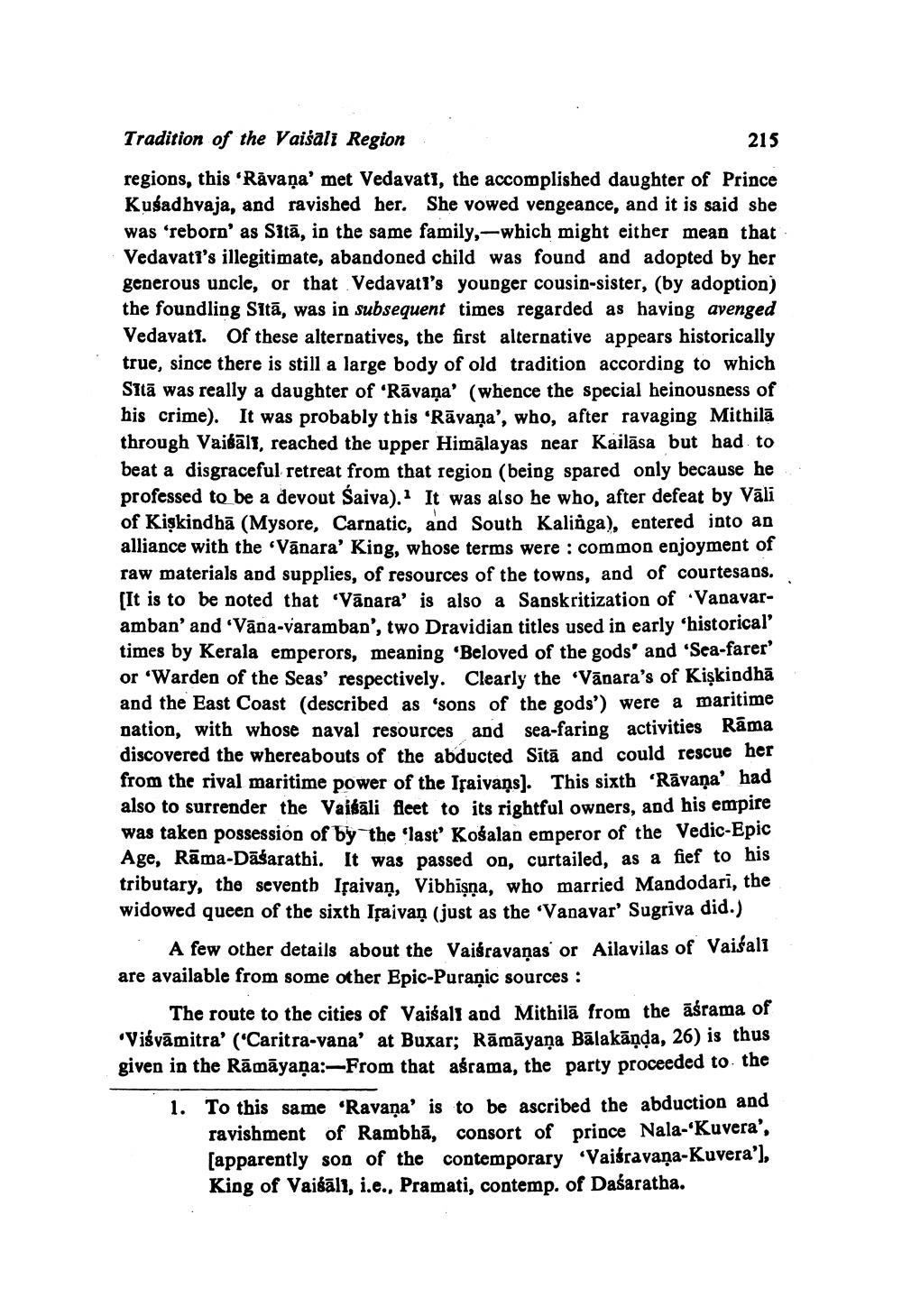________________ Tradition of the Vaisali Region 215 regions, this Ravana' met Vedavati, the accomplished daughter of Prince Kusadhvaja, and ravished her. She vowed vengeance, and it is said she was 'reborn' as Sita, in the same family,-which might either mean that Vedavati's illegitimate, abandoned child was found and adopted by her generous uncle, or that Vedavati's younger cousin-sister, (by adoption) the foundling Sita, was in subsequent times regarded as having avenged Vedavati. Of these alternatives, the first alternative appears historically true, since there is still a large body of old tradition according to which Sita was really a daughter of Ravana' (whence the special heinousness of his crime). It was probably this 'Ravana', who, after ravaging Mithila through Vaigali, reached the upper Himalayas near Kailasa but had to beat a disgraceful retreat from that region (being spared only because he professed to be a devout Saiva). It was also he who, after defeat by Vali of Kiskindba (Mysore, Carnatic, and South Kalinga), entered into an alliance with the "Vanara' King, whose terms were : common enjoyment of raw materials and supplies, of resources of the towns, and of courtesans. [It is to be noted that "Vanara' is also a Sanskritization of Vanavaramban' and 'Vana-varamban', two Dravidian titles used in early 'historical' times by Kerala emperors, meaning 'Beloved of the gods' and 'Sca-farer or 'Warden of the Seas' respectively. Clearly the "Vanara's of Kiskindha and the East Coast (described as 'sons of the gods') were a maritime nation, with whose naval resources and sea-faring activities Rama discovered the whereabouts of the abducted Sita and could rescue her from the rival maritime power of the Iraivans). This sixth 'Ravana had also to surrender the Vaigali fleet to its rightful owners, and his empire was taken possession of bly the 'last' Kosalan emperor of the Vedic-Epic Age, Rama-Dasarathi. It was passed on, curtailed, as a fief to his tributary, the seventh Iraivan, Vibhisna, who married Mandodari, the widowed queen of the sixth Iraivan (just as the 'Vanavar' Sugriva did.) A few other details about the Vaisravanas or Ailavilas of Vaisali are available from some other Epic-Puranic sources : The route to the cities of Vaisali and Mithila from the asrama of "Visvamitra' ('Caritra-vana' at Buxar; Ramayana Balakanda, 26) is thus given in the Ramayana:From that asrama, the party proceeded to the 1. To this same "Ravana' is to be ascribed the abduction and ravishment of Rambha, consort of prince Nala-'Kuvera', [apparently son of the contemporary "Vaisravana-Kuvera'), King of Vaisali, i.e., Pramati, contemp. of Dasaratha.




